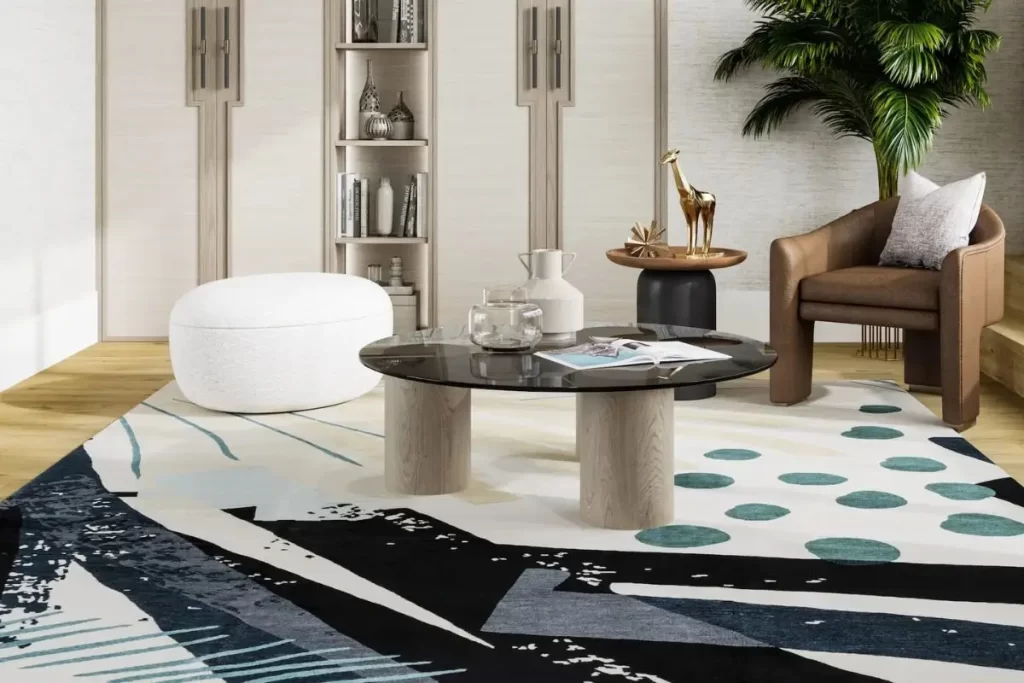Carpets provide comfort, warmth, and style to any space, but like any other home investment, they require attention and care to last. Understanding the factors that influence the longevity of your carpet will help you make informed decisions and maximize your carpet’s lifespan. Whether you’re choosing a new carpet or maintaining an existing one, knowledge of materials, care practices, and environmental impacts can ensure that your carpet continues to enhance your home for years to come. This guide explores the main factors that affect carpet durability, offering actionable tips for extending the life of your flooring.
The Key Factors That Affect Carpet Lifespan
The material of the carpet is one of the most important factors influencing its lifespan. Wool carpets are known for their natural resilience and can last anywhere from 15 to 20 years when well-maintained. Nylon, another popular choice, is highly durable and suitable for high-traffic areas, lasting 10 to 15 years. Polyester, though more affordable, is less durable and typically lasts around 5 to 10 years. The construction of the carpet—whether it’s woven, tufted, or braided—also plays a role in longevity. Denser carpets with tightly packed fibers tend to last longer than those with loose or shaggy weaves. Additionally, the carpet backing material (such as jute or synthetic latex) impacts its overall durability. A sturdy backing helps prevent early breakdown and contributes to the overall longevity of the carpet. Investing in high-quality materials and construction ensures a carpet that can endure daily use for many years.
Foot Traffic: The Silent Carpet Killer
One of the primary factors that determine how long a carpet lasts is the amount of foot traffic it experiences. Areas such as hallways, living rooms, and entryways are subjected to constant movement, which accelerates the wear on carpet fibers. Over time, the fibers in these high-traffic areas compress, lose their texture, and begin to break down. In contrast, carpets in bedrooms and spaces with minimal traffic experience much slower wear. To extend the life of your carpet, it’s crucial to manage foot traffic effectively. You can use rugs or runners to protect high-traffic areas or opt for commercial-grade carpets designed to withstand heavy use. For homes with children and pets, durable, stain-resistant carpets like nylon are highly recommended for these high-demand zones. Installing carpet tiles is another solution, allowing you to replace only the worn-out sections without replacing the entire carpet.

Carpet Care: The Secret to Prolonged Life
Proper care and maintenance are essential for extending the lifespan of your carpet. Regular vacuuming is the most effective way to remove dirt, dust, and debris that can damage the fibers over time. Aim to vacuum at least once a week and more often in high-traffic areas to prevent dirt buildup. Professional deep cleaning every 12-18 months can help to eliminate deeply embedded dirt and stains that regular vacuuming can’t reach. It’s also vital to address spills and stains immediately to prevent them from setting in and causing permanent damage. Use blotting techniques instead of rubbing stains, which can push dirt further into the fibers. Another important maintenance tip is to rotate furniture occasionally to prevent uneven wear in specific areas. With consistent care, including proper cleaning and spot treatment, you can keep your carpet looking fresh and extend its lifespan for years.
How Environmental Factors Impact Carpet Durability
Environmental factors like humidity, temperature, and exposure to sunlight can significantly affect the lifespan of your carpet. In humid environments, excess moisture can lead to mold or mildew growth, which not only damages the carpet but also contributes to unpleasant odors. To combat this, using a dehumidifier or ensuring proper ventilation can help control moisture levels in your home. Direct sunlight can cause carpet colors to fade and weaken fibers, especially in areas with large windows. To protect your carpet from UV rays, consider using window treatments such as blinds, curtains, or shades. Additionally, extreme temperature fluctuations can cause carpet fibers to expand or contract, leading to a loss of texture and overall resilience. If you live in a climate prone to these conditions, choosing carpets designed to resist UV damage and moisture can help prolong their life. Proper environmental control ensures your carpet stays intact and vibrant for longer.
How to Spot the Signs of Carpet Wear
Over time, all carpets show signs of wear, and recognizing these early can help you determine when it’s time for a replacement. One of the most common signs of carpet aging is the loss of resilience. If your carpet no longer bounces back after being stepped on, it could indicate that the fibers have broken down and lost their structure. Other indicators of wear include visible matting or fraying in high-traffic areas. If the carpet shows noticeable thinning or discoloration, it may be time to replace it, especially if cleaning has not improved its appearance. In addition, carpets can develop areas where the fibers appear flat or crushed due to constant foot traffic. While small repairs or cleaning can help restore the look of a carpet, significant damage—such as holes or irreversible staining—may require full replacement. Regular inspections will help you decide when repair efforts are no longer sufficient.

Choosing the Right Carpet for Longevity
Selecting the right carpet at the outset is crucial for ensuring a long lifespan. When choosing a carpet, consider both material and construction. Nylon and wool are known for their durability, making them excellent choices for areas that experience heavy foot traffic. Wool is a natural fiber that offers resilience and luxury but may be more expensive. If you have pets or children, look for carpets specifically designed to be stain-resistant, such as those treated with stain protection technologies. Another important consideration is the carpet’s pile density—the denser the pile, the more durable the carpet. Low-pile carpets are ideal for high-traffic areas as they handle wear better than deep-pile ones. Additionally, consider your space’s specific needs. For instance, commercial-grade carpets or carpets with antimicrobial properties are ideal for office spaces or homes with allergies. By choosing the right carpet material, pile, and construction, you ensure its longevity and overall performance.
How Long Can You Expect Your Carpet to Last?
The average lifespan of a carpet varies depending on its quality, material, and care. With proper maintenance, high-quality carpets such as wool can last up to 20 years, while nylon carpets typically last between 10 to 15 years. Polyester and lower-end options may only last 5 to 10 years, especially in high-traffic areas. The durability of the carpet also depends on how well it’s maintained—frequent cleaning and addressing stains immediately can add years to its life. If your carpet is showing signs of significant wear, such as fading, fraying, or loss of texture, it may be time to replace it. Typically, carpets in high-traffic areas like entryways or living rooms will need replacing sooner than those in less-used rooms. To get the most out of your carpet, be proactive with care and cleaning and consider replacing it when it can no longer perform its function effectively.
Conclusion
The longevity of your carpet depends on multiple factors, including the material, traffic, environmental conditions, and regular maintenance. Choosing the right carpet and maintaining it with consistent care will significantly extend its life, saving you money and improving the comfort and appearance of your home. Regular vacuuming, professional cleaning, and stain treatment can keep your carpet looking fresh for many years. By taking the time to protect your carpet from environmental elements and being aware of signs of wear, you can ensure that your investment continues to provide value and enhance your living space for years to come.






